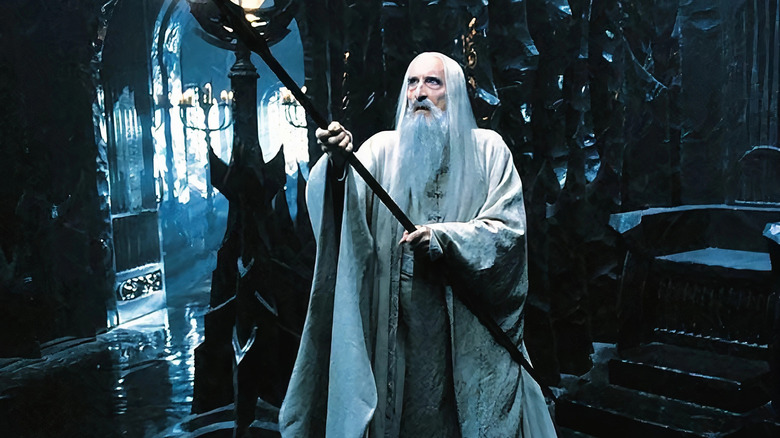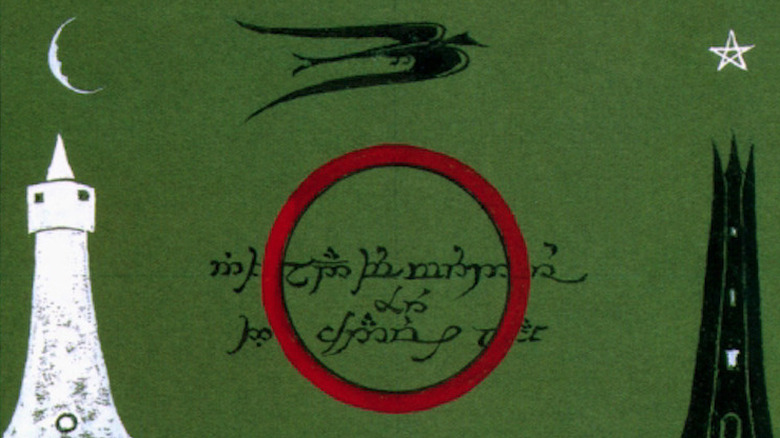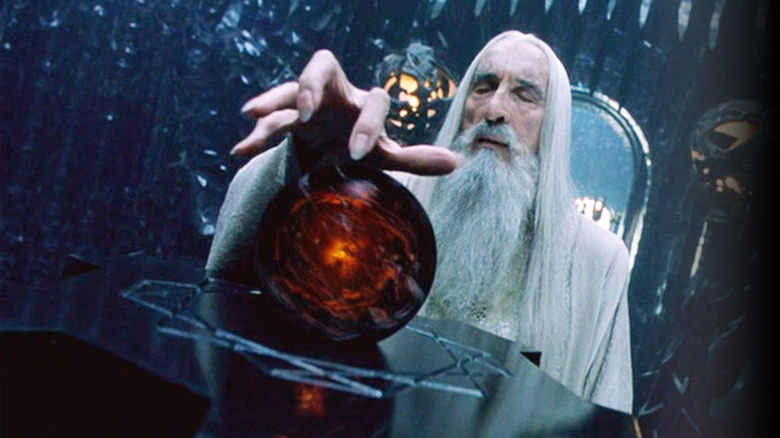Lord Of The Rings: What Are The Two Towers? The Answer Is Absurdly Confusing
J.R.R. Tolkien's novels tend to have straightforward titles. "The Fellowship of the Ring" features the formulation of its eponymous crew. "The Return of the King" centers on the exiled Aragorn's return to the throne of Gondor. Heck, the title "The Hobbit" just reflects the race of its protagonist. Even "The Silmarillion" is named after its central triad of jewelry and the book "Unfinished Tales," well, we all know what that contains.
One novel that is a bit confusing, though, is "The Two Towers." Middle-earth features a lot of towers, and half dozen come to mind immediately, scattered across the Middle-earth landscape. What "two" are referenced in the title of the second book in "The Lord of the Rings" trilogy? It turns out that the answer is a bit harder to pin down than one might think.
At first glance, it's tempting to assume that the two towers are the "big ones" — Sauron's Dark Tower of Barad-dûr and the capital of Gondor, Minas Tirith. Tolkien himself commented on the subject in a letter to his publisher on January 22, 1954. This was several months before the book was published, and in writing, he specifically states that the vague title "must if there is any real reference in it to Vol. II refer to Orthanc and the Tower of Cirith Ungol." The author follows this up with the acknowledgment that this isn't the natural thought process for readers, saying, "But since there is so much made of the basic opposition of the Dark Tower and Minas Tirith, that seems very misleading."
While this initially seems clear-cut, the debaccle doesn't end there.
Tolkien changes his towers
In the above-mentioned letter, Tolkien specifically states concern about the confusion of the title — right before pouring gasoline on the fire. How? By creating his own cover art for the book. The image wasn't used until later editions, but Tolkien's original 1954 cover art clearly depicts Orthanc and Minas Morgul – the tower that the Nazgûl use as their headquarters. It's the one that launches that giant glowing green beacon in Peter Jackson's adaptation. It is close to but distinctly separate from Cirith Ungol, which is the tower nestled next to Shelob's lair.
It is possible to deduce an answer from here, though. There are three major towers that hold the important seeing stones called the Palantiri. These structures are naturally the top contenders for titular recognition. One of these is Minas Tirith, but it isn't really in "The Two Towers." The other two citadels known to house the precious Palantiri are Orthanc and Minas Morgul.
The other knock against Cirith Ungol is that, like Minas Tirith, it's a tower that doesn't really enter the story until "The Return of the King," when Sam enters and rescues Frodo. Cirith Ungol is also impressive, but really, it's just one of several towers scattered around Mordor. In essence, it's a second-tier tower that doesn't fully factor into "The Two Towers" story.
More evidence that the second Tower is Minas Morgul
Writing for the Birmingham City Council, Philip Benjamin Coker points out that in the 3rd paperback edition of "The Fellowship of the Ring," Tolkien himself previews the second book by saying, "The second part is called The Two Towers, since the events recounted in it are dominated by Orthanc, the citadel of Saruman, and the fortress of Minas Morgul that guards the secret entrance to Mordor." Coker also provides a publisher's summary from inside the dust jacket of the 1991 hardback edition of "The Two Towers," which explicitly describes Tolkien's original art. The description once again calls out the two towers as Minas Morgul and Orthanc.
Despite the initial confusion, it really does seem that even Tolkien generally considered the titular two towers to be Orthanc and Minas Morgul. The lingering question is, did he misspeak when he first wrote that the tower was Cirith Ungol, or did he change his mind?
As an interesting aside, Peter Jackson capitalized on the vagaries of the title by providing his own pairing of strongholds. The trailer for "The Two Towers" clearly connects the Dark Tower of Sauron with Saruman's Orthanc. While "The Two Towers" title is wrapped in mystery, intrigue, and drama, though, there's no doubt about its contents. The book is the middle part of a three-part narrative that remains top-shelf fantasy reading to this day.


